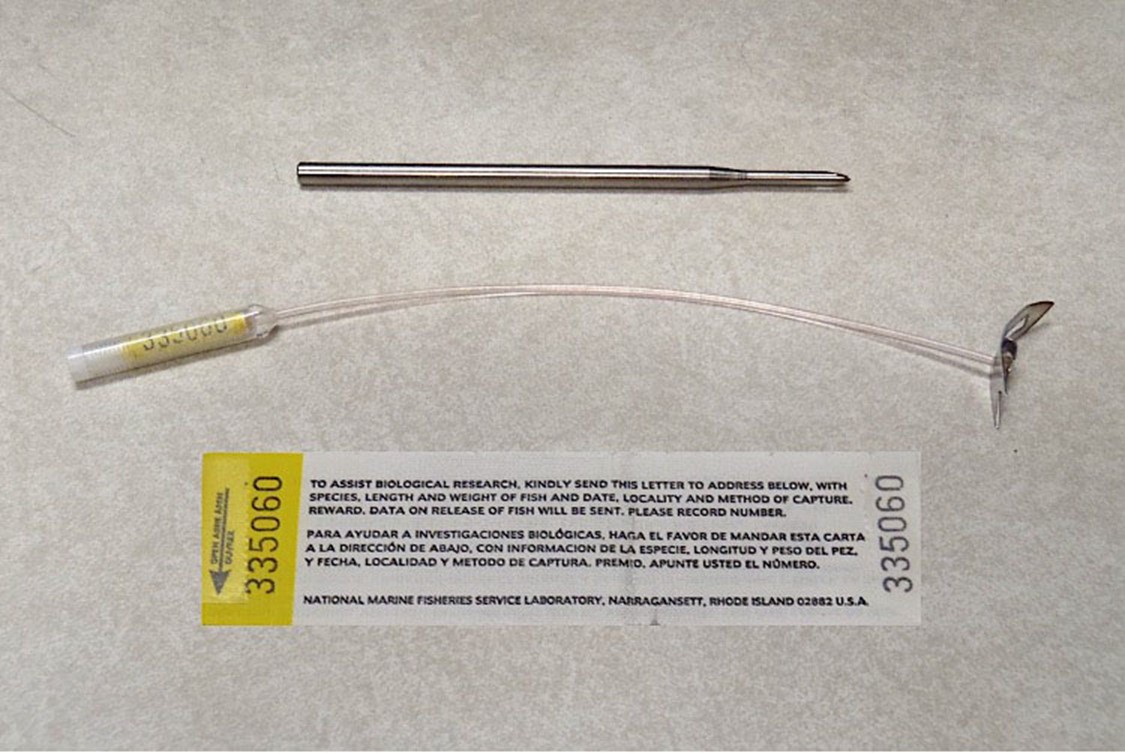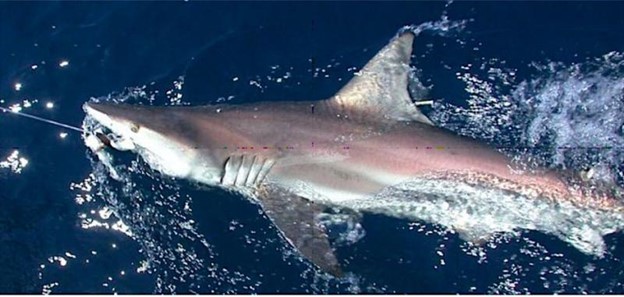Shark Taggers Wanted
Have you got the Right Stuff to assist NOAA Fisheries in their shark tagging program?
The Cooperative Shark Tagging Program started with fewer than 100 volunteer fishermen eager to help out with scientific research. It evolved into a significant source of shark data for NOAA Fisheries while promoting conservation through catch and release fishing. Thousands of fishermen, both in the United States and internationally, have contributed data throughout the past several decades. As Kate Zewinski, the program’s current coordinator put it, “the data has helped change the course of knowledge on Atlantic shark movements and distribution.”
Some of those original volunteers are still taggers today.
“Since our program has been around for such a long time, the majority of our volunteers come to us by word of mouth, but we have attended fishing expos, conferences, and tournaments over the years to help get the word out,” said Cami McCandless, a research fishery biologist and the program lead. “We have had more than 12,000 volunteers over the years, but the number of active volunteers is normally around 500 per year as an individual’s fishing activities vary from year to year.”
Anyone can volunteer with the Cooperative Shark Tagging Program. Volunteers are required to follow all local, state, and federal regulations where they fish and tag.
“We highly value our volunteer contributions to the program, but not if the data is obtained illegally or at the expense of the fish’s health,” McCandless stressed.
What Makes a Reliable Tagger?
The first and foremost priority is the safety of both the angler and the animal. This means using safe handling practices:
- Keeping the shark in the water
- Minimizing physical handling of the shark
- Working promptly and carefully
Personal record keeping is another key feature of a reliable tagger. Each tagger fills out a postage-paid tagging information card with the details of the tagged shark (species, location, length, sex, etc.). These cards can sometimes become lost or damaged in the mail. When taggers keep their own personal records, Zewinski can reach out and recover any missing information. The most usable information taggers can provide for NOAA Fisheries’ research:
- Accurate species identification
- Specific latitude and longitude location tagging
- Consistent and precisely measured length
- Condition of the shark when it is tagged
One of the biggest challenges with this NOAA-run volunteer tagging program is that the taggers are not NOAA employees. While it is important for participants to represent NOAA positively, program participants are not affiliated with NOAA. They should identify themselves as volunteers when talking with members of the public about the tagging work.
The tagging program is also not a competition. Tags are expensive and a privilege given to reliable taggers, but we cannot supply unlimited tags for participants to achieve personal tagging goals. Although there is no cost for participants to join the tagging program, understanding the volunteer tagger role and taking it seriously is essential for taggers to remain in the program.
Shark Tagging Program Benefits
NOAA Fisheries now has tag and recapture data for more than 30 shark species. They were recently published in a tagging atlas and have contributed to a number of different shark research topics.
“This program has become instrumental in shaping not only what we know about shark migration and distribution, but in defining stock structure, documenting longevity, and validating age and growth in several species. This information is essential for stock assessment and effective management,” McCandless noted.
In recent years, the data has also been used in emerging climate change and offshore wind studies.
“Times have changed, and conservation is playing a much bigger role now,” said Zewinski, referring to a shift from lethal shark fishing to non-lethal catch and release practices.
As for the program volunteers, she noted, “[Fishing] is their livelihood, hobby, or both. Most fishermen have a love and respect for the ocean and the fish within it and want sharks to stay a part of that. This is a way for them to contribute to the knowledge that helps manage these sharks, because if you’re going to catch and release, why not put it toward something good?”
Meet some of the Cooperative Shark Tagging Program’s taggers who take pride in their volunteer work and exemplify what it means to be a reliable tagger!



